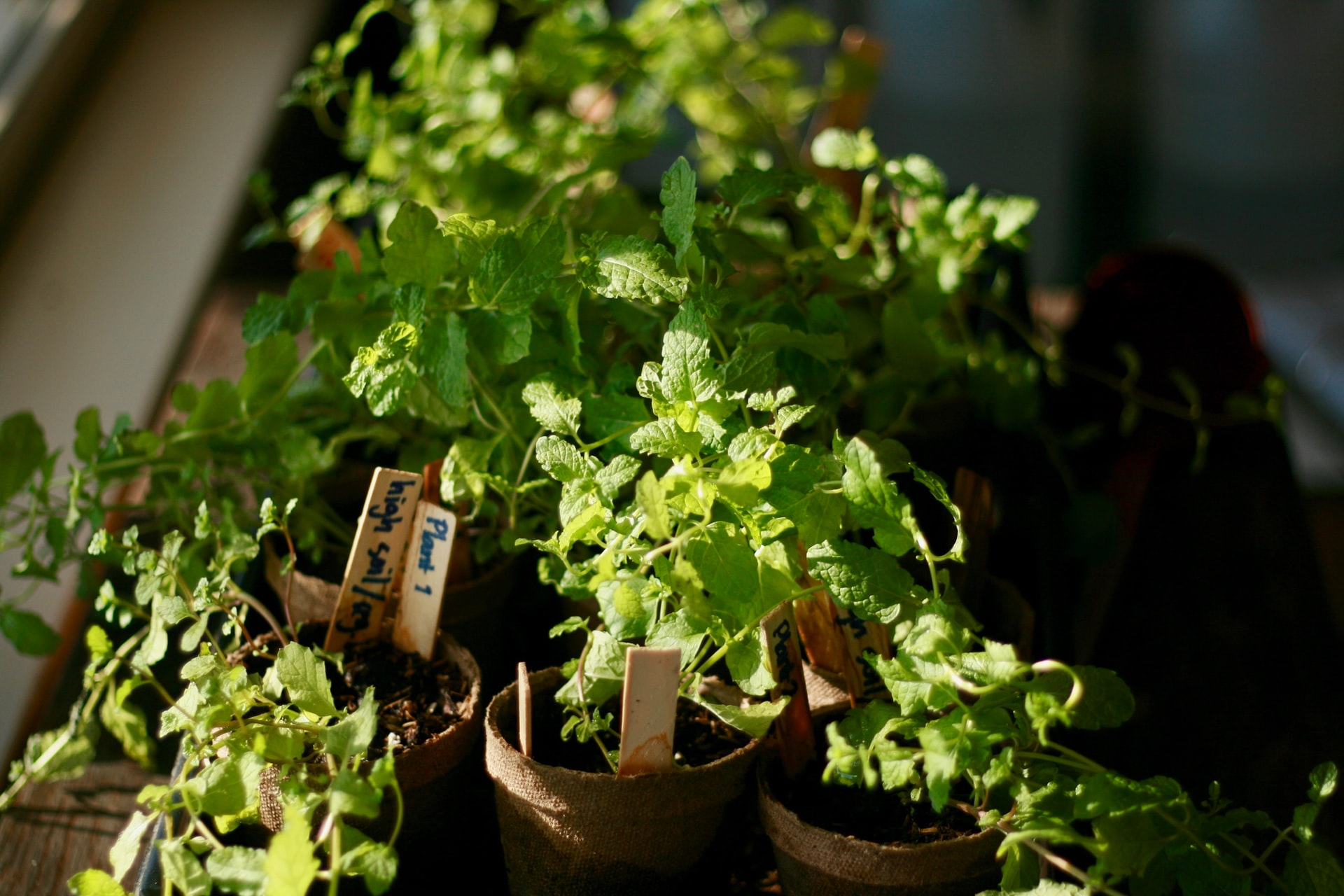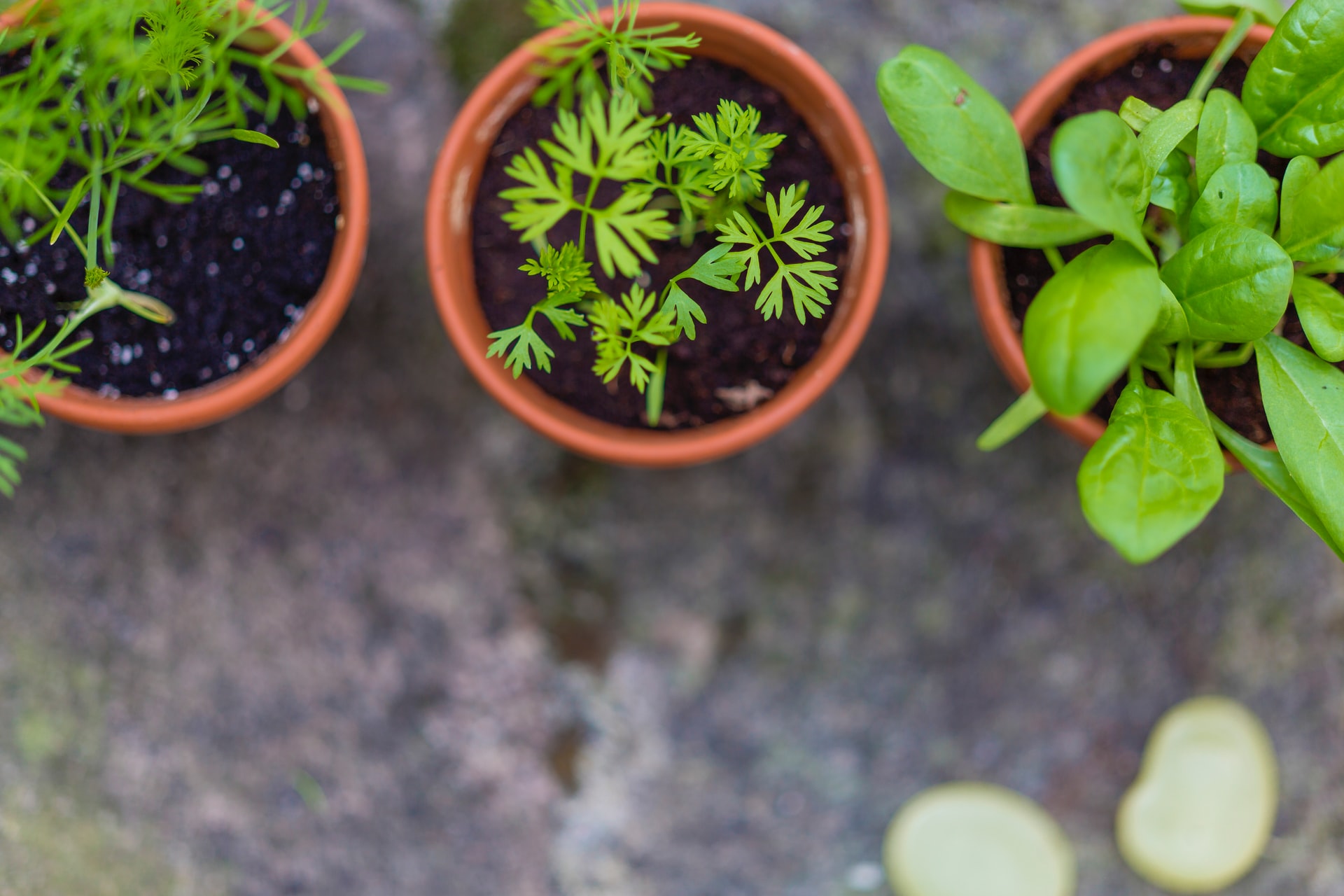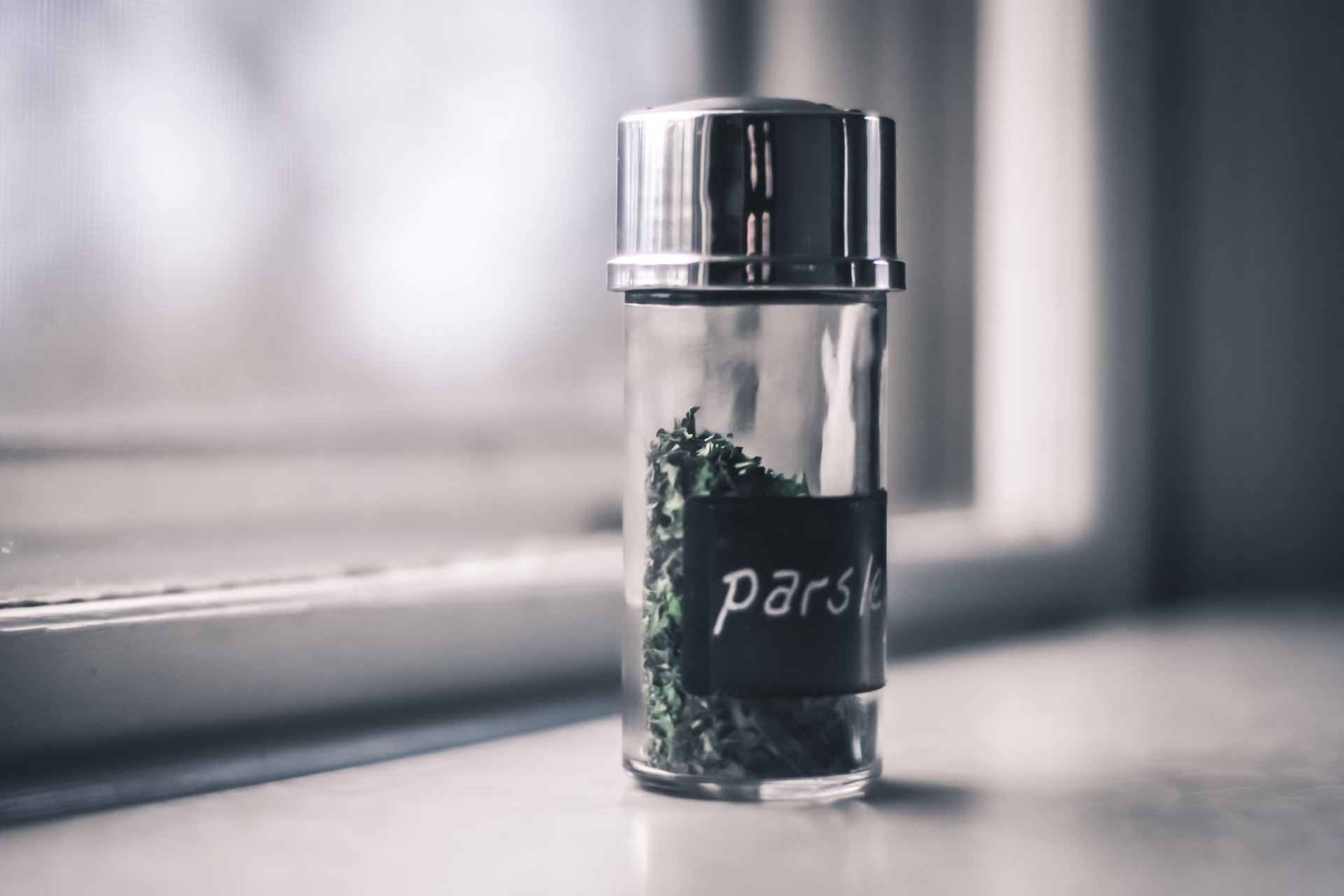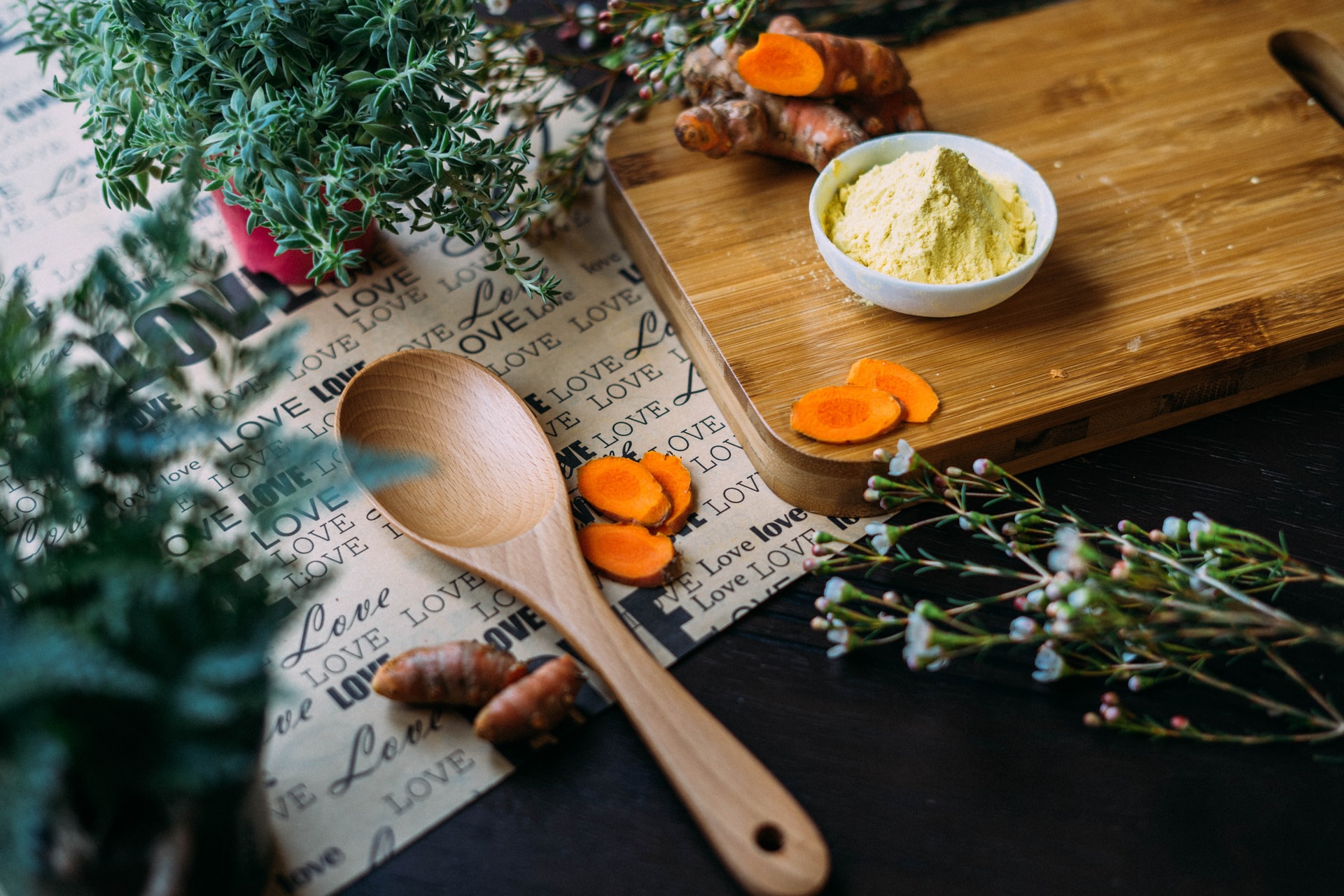Growing your own herbs indoors and blending your own spices with them is a rewarding hobby with a lot of tangible rewards. Store-bought herbs, spices, and blends can get expensive, especially if they’re organic — and if they’re not, they may contain pesticides and other harmful chemicals. Having your own fresh herb garden to cook right in your kitchen or sunroom can save you a few clams at the grocery store, and you’ll know that your seasonings are 100 percent organic, since you grew them yourself. And with all those herbs and spices so readily available, you’ll have fun experimenting with drying and mixing herbs and spices to create your favorite blends and invent your own signature seasonings. Cooking with herbs will enhance flavors.
What’s the difference between herbs and spices?
Herbs and spices are not the same thing, although they both come from plants. Herbs are the leaves of a plant, such as rosemary, thyme, sage, and oregano. Spices like cinnamon, ginger, turmeric, and pepper come from the other parts of the plant — the roots, bark, flowers, berries, or seeds — which are usually dried and often ground. Some plants provide both an herb and a spice, like the herb cilantro, whose seeds are known as the spice coriander.
Dishes you can dress up with homegrown herbs

Herbs and spices enhance the flavor of nearly any dish. Herbs tend to be milder in flavor than spices, which are richer in flavorful essential oils.
You can add herbs and spices directly to soups, stews, casseroles, eggs, potatoes, and almost any other dish. Rub an herb or spice blend into meat and fish, or use sprigs of fresh herbs to garnish your culinary creations.
Different cuisines get their signature flavors from specific herbs and spices:
- Indian — Fenugreek seeds, cumin seeds, coriander seeds
- Mexican — Cilantro, cumin, mint, oregano
- French — Tarragon, chives, parsley, chervil
- Meat dishes — Thyme, rosemary
- Seafood — Basil, dill, chives
- Vegetarian — Thyme, parsley, rosemary
Some of the most commonly grown and used herbs in the kitchen include basil, chives, lemon balm, marjoram, oregano, parsley, sage, thyme, and rosemary. You can include any of these plants in your indoor herb garden.
How to grow herbs indoors

Many varieties of herbs will thrive indoors, including basil, chives, mint, oregano, parsley, rosemary, thyme, cilantro, and bay laurel. Use a high quality, organic potting mix designed for container plants. Whenever possible, start your indoor herb garden from seed or from cuttings from your outdoor herb garden, since nursery-bought herbs may harbor pests or disease. Plant your seeds at the depth indicated on the package, and keep the soil moist until your seeds sprout. The right conditions are a must for healthy herbs. Here’s what a successful indoor herb garden requires:
- Adequate sunlight. The more light your indoor garden gets, the better your plants will do. Herbs prefer six to eight hours of direct sunlight each day — the more sunlight, the stronger the flavor of your herbs. A bright, sunny, south-facing window is the best location for growing herbs indoors.
- The right temperature. Keep the temperature in your growing area between 65 and 70 degrees Fahrenheit during the day and 55 to 60 degrees at night. During the winter, make sure drafts aren’t chilling your herbs. In the summer, don’t let the plants touch the window, or they may burn.
- Infrequent, thorough watering. Allow the soil in your herb pots to dry out between watering. Stick your finger two inches below the surface of the soil. If it’s dry, it’s time to water. The exception is rosemary, whose soil shouldn’t dry completely before watering. Water slowly so that the soil has a chance to absorb the water — otherwise, it may run straight through the pot and out the bottom. Don’t use soft water on your plants — the high sodium content will harm them.
- Optimal drainage. Your pots should have enough drainage holes on the bottom to prevent excess water from staying in the pot. Use a potting mix that provides the best possible drainage. Place a saucer under each pot to catch water that runs through.
- Proper air circulation. Good air circulation around your plants helps prevent the spread of disease. Don’t crowd them in too tightly, and rearrange them occasionally.
- Fertilization. Every two weeks, fertilize your herbs with a low dose of water-soluble fertilizer. Don’t over-fertilize, which will damage your plants.
- Pest control. Insect pests like spider mites, scales, and young whiteflies can decimate your herb garden. If you see an insect pest on your plants, pick it off, and examine the plant for more. Spray the plant with an insecticidal soap or a solution of a tablespoon of mild dish soap dissolved in a gallon of water. For the insecticidal soap, follow the directions on the packaging. For the DIY treatment, spray the plants once a week — but only if you see insects.
- Disease control. While plagues of disease rarely affect herbs, over-watering your plants or growing them in heavy soil may lead to downy mildew, rust, stem rot, and powdery mildew.
Technology for indoor herb gardens
You can grow a prolific indoor herb garden with a pack of seeds and the right soil and conditions. But certain technologies can improve growing conditions and the health and wellbeing of your plants.
- Grow lights. If you don’t have a space that’s sunny enough to successfully grow herbs inside, invest in a growing lamp, which you can purchase for under $100 at your local home improvement center, or a full setup, which can run into the hundreds of dollars.
- Garden Towers. If you do not have enough room to grow everything you want, consider getting a vertical tower garden that allows growing a lot of plants in a limited space.
- Soil monitors. If you’re the type who might well forget to water your herbs — or you tend to over-water out of caution — a soil monitor can tell you exactly when it’s time to hydrate.
- Air purifier. Clean air does plants well, and the indoor air in the typical home is about five times dirtier than the air outside. A purifier cleans your air and can even monitor humidity and temperature.
- Automated indoor gardens. Prefabricated indoor herb gardens automate the entire growing process, from multidirectional lighting and automatic water tanks to soil monitoring and more, all controlled from your phone with a handy app.
How to dry and store herbs

You can dry your homegrown herbs in several ways:
- Air dry. Clip a bunch of stems from the base of the plant, and tie a string around the stems. Hang the bunch upside down until it’s dry. Similarly, you can pull just the leaves from the plant, lay them on a rack to dry. When all of the moisture is gone, crush the leaves into a container.
- Microwave dry. Separate the leaves from the stems, and run them under cold water. When they’re no longer wet, place them between two paper towels, and microwave for one minute. If they’re not dry, nuke them again for 30 seconds, and repeat until they’re ready to crumble.
- Dehydrate. If you have a dehydrator, lay out the leaves in a single layer on each tray. Use the lowest setting, and let it work for two to four hours.
- Oven-dry. Lay the plucked herb leaves on a silicone mat or a piece of cheesecloth. Bake at 200 degrees for around 30 minutes or until the leaves crumble easily.
No matter how you dry your herbs, how you store them is important. Glass jars with a tight-fitting lid work well for storing herbs. To preserve their flavor, keep herbs in a cool, dry, and dark place, like a cupboard away from the stove. Stored properly, your dried herbs should be good for around a year — you’ll know they’ve gone bad when you crush them in your palm but can’t smell a thing.
How to make your own powdered spices

Powdered spice blends make cooking more convenient since you don’t have to measure out a bunch of different herbs and spices for one dish. Premade blends also ensure your favorite dishes will taste the same each time. Powdered spice blends are easy to make yourself.
Tools you’ll need
- Glass storage jars with tight lids. Plastic containers absorb the smell of your blends, and they’re not much to look at. Store — and show off! — your beautiful blends in clear glass jars, and screw the lids on tight for optimum freshness.
- Coffee or spice grinder. Either tool will work to grind herbs and spices in a matter of seconds. Clean it after each use — use a stiff paintbrush to coax stubborn residue out from under the blades.
- Mortar and pestle. Grinding your spices the same way the ancients did is extremely satisfying for many spice enthusiasts. You can grind them into a rough mixture, a fine powder, or even an ultra-fine paste. The mortar is a heavy bowl, usually made of granite or ceramic, that holds the spices while you grind them in a circular motion with the equally heavy, club-shaped pestle.
- Funnel. You don’t want to spill half of your blend trying to fill the jar, so use a funnel with a nice, wide spout no larger than the jar opening.
- Labels. No matter how certain you are that you’ll remember which blend is which without labels, you will almost certainly be wrong. You can always open them all up and give them a sniff, but making labels is more convenient, and you can get creative with the design if you’re so inclined.
Choosing your blends and ingredients
You can find recipes for countless spice blends on the Internet, including endless varieties of curries, rubs, and ethnic seasonings. Classic mixes include:
- Baharat seasoning, a warm Middle Eastern blend that typically includes paprika, black pepper, cumin, coriander, cloves, cardamom, and nutmeg. Use it to add depth of flavor to soups, meat, and fish dishes.
- Cajun seasoning, a spicy, zesty blend that adds kick to nearly any dish, including stir frys and your famous chili. It usually contains paprika, cayenne, garlic powder, oregano, and black pepper.
- Italian seasoning, a blend of oregano, rosemary, and basil with a homey, aromatic flavor that does great justice to pastas, fish, and chicken.
Or, you can get creative and experiment with your own signature blends.
Decide what you’re going to blend, and pull out your homegrown ingredients. Get whatever herbs and spices you’re missing from your local farmer’s market or organic co-op. If you’re following a recipe, just measure your ingredients and blend them by hand or in your grinder. If you’re winging it, let your instincts and your olfactory senses lead the way. Experiment with different combinations, and play around with amounts — but write it all down as you go, just in case you strike culinary gold and want to repeat the feat.
A growing hobby?
You may enjoy growing herbs so much that you create a bigger operation every year. You may even need to consider a small, indoor greenhouse at some point, which opens up enormous possibilities for growing more exotic plants to experiment with. If you end up going down the indoor herb-growing wormhole, remember: You heard it here first.




